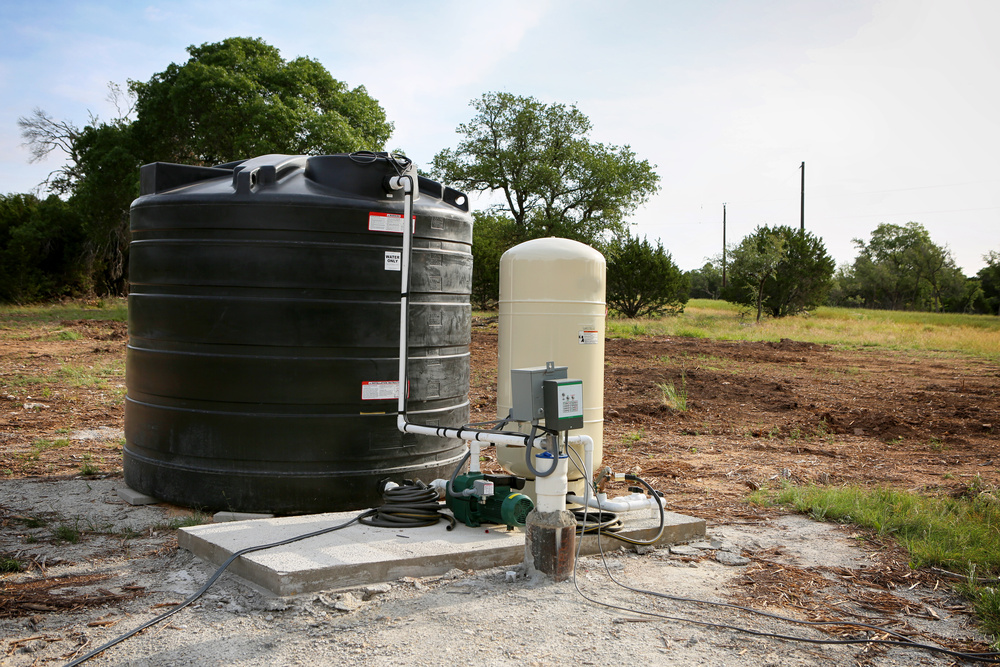
Living in a rural area or away from the main water supply could ensure the property will have a well. Although some smaller towns also have a water well system, it is less common. Whatever the method, it is essential for the family to have clean, running water to cook with, clean, and do other household chores
A well’s water production will depend on the water table below the ground surface as it draws water from these underground sources for a family to use. Unfortunately, as the water table drops, the water could become scarcer, and the well could become low-yielding.
According to an article by PennState Extension, a low-yielding well is generally considered a well that delivers less water than the home or farm would need daily. The family will then have to devise a plan and find a solution to supply the family with enough water for their needs.
Thankfully there have been others with a similar problem, and out of their frustration, many different solutions were born for helping with a low-producing water supply:
Determine and Plan Peak Time Water Use
A well that doesn’t provide enough water for the family during their busiest times of the day could frustrate the residents endlessly. Therefore, it will be good practice to determine how much water they will use and plan their routine accordingly.
After implementing their plan to reduce water usage during peak times, the family will be able to see an improvement. If they are still experiencing a shortage, they should search for an alternative, like finding new well solutions or some of the other options below.
Have a Backup Extraction System
Because it may take some time for a low-yield well to provide enough water to pump into a storage container, it may be necessary for the family to have a backup system. Depending on the amount of water they need and their budget, they can find a backup that may work well for them.
One solution that could help to get water out of the low-producing well in an emergency is a hand pump. Fortunately, there are many suppliers of hand pumps, and each will have a different model that families can consider buying. These will also come in handy during a power outage when the pump connected to the well usually doesn’t function.
You can watch this video for more information:
Replace Some of the Fittings in the Home
Water usage could come as quite a surprise, mainly when homeowners start tallying up how much water they can save by replacing some of the home’s fittings. Low-flow taps and low-flush toilet cisterns could use dramatically less water than regular fitting, as would a water-saving shower head.
Some of the other big water guzzlers of the home are the washing machine and dishwasher. Although convenient, these could quickly take up all the water supply, leaving not much for other tasks in and around the house. Only doing the washing when there is a complete load could save a family between 15 to 50 gallons of water per load, according to an article for Better Homes & Gardens.

With switching to more water-conscious fittings and appliances, homeowners should check if fixtures or toilets are leaking. A small drip could constantly drain their water supply, leaving the whole family with a water crisis if they don’t keep it in check.
Add a Storage Option for Saving Water
Some families prefer above-ground solutions like a plastic or metal water tank of an appropriate size, while others will have a water reservoir installed below ground level. Both options will ensure that the well and water pump can top up the water as the family uses it.
With the water tank holding enough water to carry the family through their peak times, they don’t have to worry about the low yield of the well and can comfortably go about their day unless the tank requires maintenance or cleaning.
If the water is still insufficient, the family should consider finding a professional contractor that can assist them in installing a reservoir with more capacity so they won’t go without their much-needed water.
Invest in a Larger Pressure Pump
Pressure pumps come in various brands, strengths, and sizes, giving the family different options for finding the correct one. This can be a very costly item to purchase. However, considering how it can answer the family’s water problems, it may be deemed a good investment.
While on the subject of increasing the water pumping capacity, there is one more thing to think about—adding a water level sensor. The sensor measures the water level in the reservoir tank, and if it drops below a certain point, it will automatically switch on the pressure pump to fill it up again. A larger pressure pump quickly restores the water level, so the family never even notices their well is low-yielding.
Widen or Deepen the Borehole
Saving the most expensive route for last, families could consider hiring a professional company to widen or deepen the well’s borehole. Usually, this involves workers bringing a specific borehole drill to have better access to the underground water system.
As mentioned before, the water level could drop, or it may seem to disappear with seasonal drought. Families who have tried all the other options for improving their water supply should consider using this method as a last resort due to the immense costs involved.
One of the reasons these contractors will have a hefty fee is that they may need to use specialized equipment like ground penetrating radar to determine where they should drill. According to a study for IEEE Xplore, a borehole radar gives a 3D representation instead of the usual 2D image for conventional navigation.

The Conclusion
A low-producing well can sometimes be frustrating, especially when a family doesn’t plan, conserve water, or install the appropriate tank and pump. Consequently, they may need to change their lifestyle or look for a solution to meet their needs. The excellent news about low-yielding wells is that families wouldn’t have to give their water any further thought with a proper well solution.












